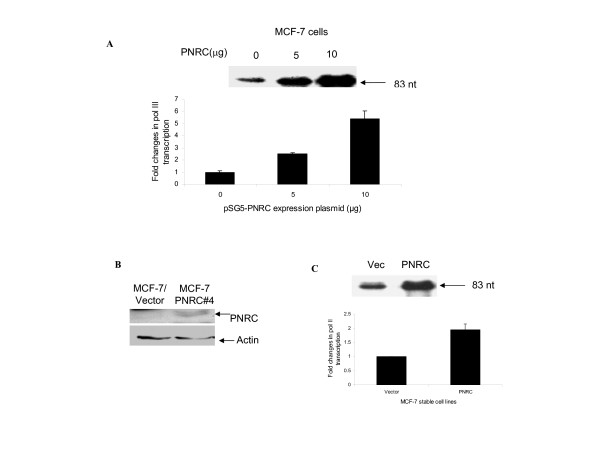Figure 3.
PNRC stimulates the transcription of tRNAarg gene by Pol III. MCF7 breast cancer cells (A) were transiently transfected with 10 μg of reporter plasmid pArg-maxi which contains a Drosophila tRNAarg gene and increasing amounts (0, 5, or 10 μg) of PNRC expression plasmid, pSG5-PNRC. Cells were cultured for 24 hours and the tRNAarg transcripts in 1 μg of total RNA isolated from the transfected cells was determined by RNase protection assay using a 32P-labeled antisense riboprobe. An example of an autoradiogram of tRNAarg transcript (indicated by an arrow) and quantification of the levels of tRNAarg mRNA from three independent experiments are shown. B, Western blot analysis of PNRC protein in MCF7/vector and MCF7/PNRC stably transfected cells. The procedures for transfection, G418 selection, and individual clone screening were described in Methods. An aliquot of cell lysate, from MCF7/vector or MCF7/PNRC cells, equal to 100 μg of protein was analysed by Western blot using PNRC antiserum (1:500 dilution) or anti-actin antibody (1:1000 dilution) as previously described [2]. The protein bands with molecular weights corresponding to those of PNRC or actin were indicated by arrows. C, MCF-7/vector or MCF7/PNRC stable expression cells were transiently transfected with 10 μg of reporter plasmid pArg-maxi. Twenty-four hours after transfection, the tRNAarg mRNA levels in the transfected cells were analysed by RNase protection assay as described for A. An example of an autoradiogram of tRNAarg transcript (indicated by an arrow) and quantification of the levels of tRNAarg mRNA from three independent experiments are shown.

